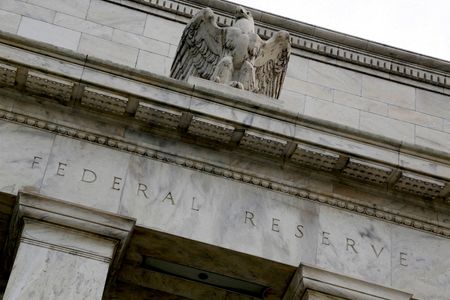By Shankar Ramakrishnan and Davide Barbuscia
NEW YORK (Reuters) – The U.S. corporate bond market is set to break new issuance records as borrowers take advantage of lower financing costs than last year and investors, emboldened by the prospect of an economic “soft landing,” pile into the asset class.
The Federal Reserve recently poured cold water on market expectations of imminent interest rate cuts, though its policymakers have projected that rates will fall this year as inflation continues to slow despite ongoing economic strength.
For investors, this represents an opportunity to load up on corporate bonds that pay high yields but have a relatively low default risk in the absence of a recession.
“It’s a great time to be in fixed income,” said Lindsay Rosner, head of multi-sector fixed income investing at Goldman Sachs Asset Management.
“Great starting place in terms of all-in yields; a great place to be in terms of the forward path of monetary policy, which is cutting, rather than hiking; and there is a more benign outcome as the recession probability has greatly decreased,” she said.
Issuance of bonds by companies rated investment-grade surged above $196 billion last month, making it the busiest January on record. This record issuance may be repeated this month, with BofA Global estimating nearly $160 billion to $170 billion in just investment-grade rated bond supply, which would make it the busiest February ever.
Such back-to-back record months at the start of the year are unusual even for the prolific investment grade market, which is expected to see nearly $1.3 trillion of bond issuance this year.
“We have a record issuance month because investors are rushing to lock in debt that had very low default potential and could generate 5%-6% in returns this year if you get in now before yields start falling,” said Edward Marrinan, a credit strategist at SMBC Nikko Securities.
STRONG DATA
The prospect of falling interest rates and a “soft landing” for the economy – a scenario in which inflation cools without a painful recession and sharp rise in unemployment – is also fuelling a search for yields and boosting demand for the junk-rated bond market. Junk bond issuance volumes touched more than $31 billion in January, the highest level since November 2021.
For the week ended Jan. 31, inflows into funds and exchange-traded funds (ETFs) investing in investment-grade bonds flipped to an outflow of $1.702 billion from an inflow of $3.298 billion in the prior week. Those investing in junk bonds saw inflows jump to $2.373 billion from $411 million the prior week, TD Securities said in a report, citing EPFR Global data.
That is partly because investment-grade companies have been issuing bonds at credit spreads that have little to no premium over the underlying Treasury benchmark and their existing paper.
Last month, for instance, Procter & Gamble priced $1.35 billion five-year and 10-year bonds at a spread over U.S. Treasuries that was one of the tightest levels on record, according to Informa. The average new issue premium on investment-grade bonds for the month was little to nothing, compared to 3 to 4 basis points in previous months.
Brandon Swensen, a senior portfolio manager on the BlueBay Fixed Income team at RBC Global Asset Management, said he was bullish on both investment-grade and high-yield credit due to strong demand and good fundamentals. But, he said, valuations are “a bit full”.
Credit spreads have widened in recent days but remain largely below levels seen over the past two years.
“We’re not pushing all in and saying it’s a huge buying opportunity, but … not that much needs to go right to see some low double-digit-type returns this year,” Swensen said.
The U.S. Labor Department reported on Friday that U.S. job growth accelerated in January and wages increased by the most in nearly two years.
While the data reinforced market expectations that a recession this year is unlikely, it also dashed hopes that the Fed would cut rates soon, leading to a more selective approach in riskier parts of the bond market.
“Adding a lot of market risk right now does not feel like the prudent thing to do. We feel like we’re about mid-cycle in the economy … But there’s a lot to be done underneath,” Goldman’s Rosner said.
(Reporting by Shankar Ramakrishnan and Davide Barbuscia; Editing by Paul Simao)
